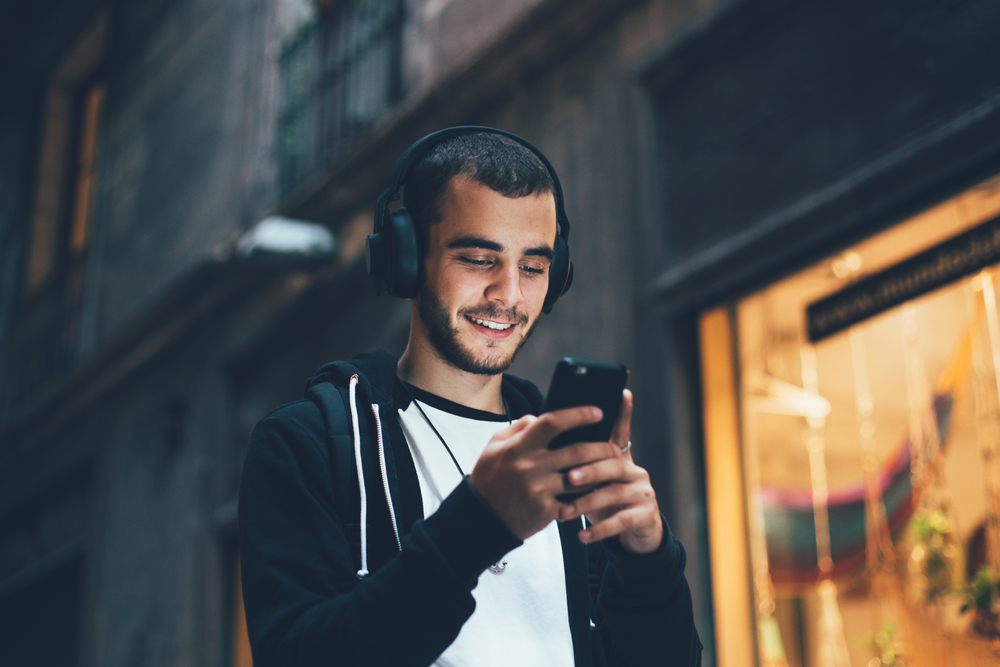
James is a music enthusiast who has mastered the art of incorporating his favorite tunes into his daily life, easily transitioning from Spotify at his work-desk to Pandora on his runs, and meticulously crafting playlists to perfectly complement every activity, whether he’s working out, cooking a meal, or immersed in a gaming session. His headphones are his continual companions, converting his life into a fully soundtracked experience. James takes comfort and delight in the captivating world of music, but the very source of his happiness may be damaging his cherished ability to hear without him recognizing it.
There are safe ways to appreciate music and ways that are more risky to your hearing health. Unfortunately, a, any us lean towards the second approach.
How does lengthy periods of music exposure lead to hearing loss?
As time pass, loud noises can lead to degeneration of your hearing abilities. We’re used to regarding hearing loss as an issue associated with aging, but an increasing amount of research suggests that it’s actually the accumulation of noise-related damage that is the issue here and not anything inherent in the process of aging.
Younger people are more sensitive to noise-induced damage as their ears are still in the developmental phase. And yet, young adults are more likely to be dismissive of the permanent perils of high volume. So there’s an epidemic of younger people with hearing loss, thanks, in part, to widespread high-volume headphone use.
Is it possible to enjoy music safely?
Listening to music at full blast with no limits is the most hazardous strategy. But there is a safe(er) way to enjoy your music, and it normally includes turning the volume down. The general rules for safe volumes are:
- Adults should restrict their device listening time to 40 hours or less and ensure the volume remains under 80 dB.
- If you’re younger than 18, 40 hours is still fine, just be sure to keep the volume at a safe level, 75 decibels or lower.
Breaking it down, you’re looking at approximately 5 hours and 40 minutes of listening every day. Though it might seem excessive, the time can pass surprisingly fast. In spite of this, most people possess a well-developed understanding of time management, a skill that is typically perfected during early childhood.
The more challenging part is monitoring your volume. On most smart devices, computers, and televisions, volume is not computed in decibels. It’s assessed on some arbitrary scale. Maybe it’s 1-100. But maybe it’s 1-16. You may not have any clue what the max volume on your device is, or how close to the max you are.
Tips for effectively keeping track of your music volume
To deal with this issue, a number of free noise tracking applications are available for both iPhone and Android devices. These apps supply immediate feedback on surrounding noise levels, enabling users to tweak their listening volume to safe levels.
Because of this, many audiologists suggest utilizing one of the numerous noise level tracking applications available at no cost. These apps– extensively available for both iPhone and Android devices– will give you real-time readouts on the noises around you. In this way, you can monitor the decibel level of your music as it plays and make adjustments as necessary.
A volume comparison: garbage disposals and more
For example, a volume level of 80 decibels is similar to the sound produced by a basic garbage disposal or dishwasher – you can hear them, but they won’t blow your ears out. Identifying this volume level is important because it denotes the point at which hearing loss becomes a real and tangible worry.
It’s important to exercise heightened caution when noise levels go above this critical point. Consider reducing your exposure to extremely loud music by listening to specific songs at the highest volume instead of listening to entire albums.
Extended exposure to loud sounds can lead to hearing problems, including ringing in the ears, or tinnitus, and potentially irreversible damage to one’s hearing. By being mindful of when our ears are at risk, we enable ourselves to make informed decisions in order to encourage safer listening habits.
Make an appointment for a hearing evaluation
To further prioritize your hearing health, think about reaching out to a hearing specialist to set up a comprehensive hearing test. Taking proactive actions like consistent screenings can pinpoint possible issues at an early stage, enabling quick actions and tailored advice to safeguard your valuable hearing.